A Pacific Ocean Legacy Embracing Tradition
Protecting 4 million square kilometers of Pacific waters by 2016
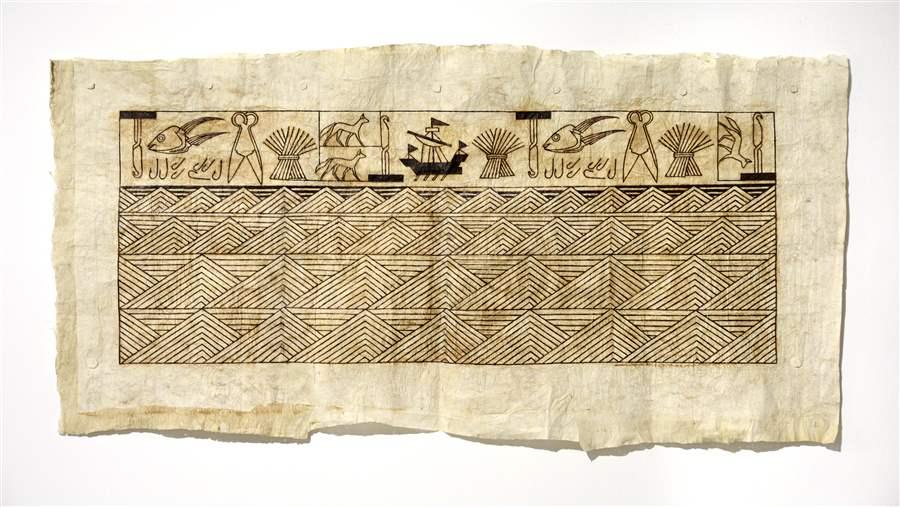 © Dame Robin White
© Dame Robin WhiteThe depiction of the ocean is a traditional Polynesian pattern. (Dame Robin White)
Ancient Polynesians used the sun, stars, and ocean swells to navigate the Pacific, the largest ocean on Earth with nearly half the world’s marine waters. From west to east, they explored and settled a significant portion of the Pacific. Known as the Polynesian Triangle, this enormous swath of ocean has Hawaii at its northern point, while Easter Island and New Zealand mark its eastern and western boundaries, respectively.
Pacific Island communities remain deeply connected to the ocean and uniquely attuned to the need to protect it. Embracing this tradition, Global Ocean Legacy, a project of The Pew Charitable Trusts and its partners, is collaborating with communities and governments across the Pacific to create a conservation legacy: the protection of 4 million square kilometers (1,544,400 square miles) of ocean waters by 2016 through the establishment of large, highly protected marine reserves.
Around the world, Global Ocean Legacy works with local communities and indigenous peoples, fishermen, scientists, governments, and the business sector to honor and conserve critical ocean environments. Together, we are establishing the world’s first generation of great marine parks.
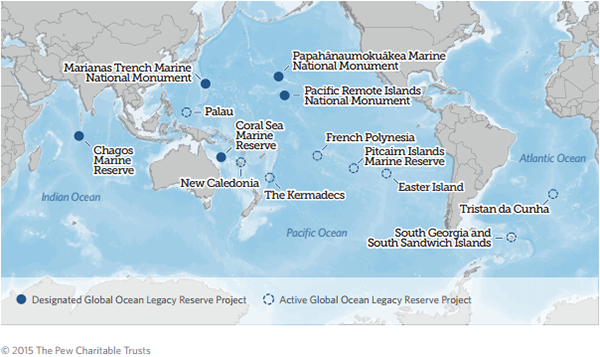
In the Pacific, our efforts have contributed to the safeguarding of nearly 2 million square kilometers (772,200 square miles) of ocean in large, highly protected marine reserves. Those include the Papahānaumokuākea Marine National Monument (United States), the Marianas Trench Marine National Monument (United States), the expanded Pacific Remote Islands Marine National Monument (United States), and the Coral Sea Marine Reserve (Australia).
Building on this momentum, Global Ocean Legacy is collaborating with the people of the Pacific on an ambitious vision to protect 4 million square kilometers (1,544,400 square miles) of ocean by 2016 through the establishment of new reserves. Protection on this scale would further demonstrate the region’s ocean conservation leadership and its recognition that safeguarding special places in the sea is essential for healthy marine life and island communities.
Global Ocean Legacy efforts are underway in these Pacific locations:
Easter Island / Rapa Nui
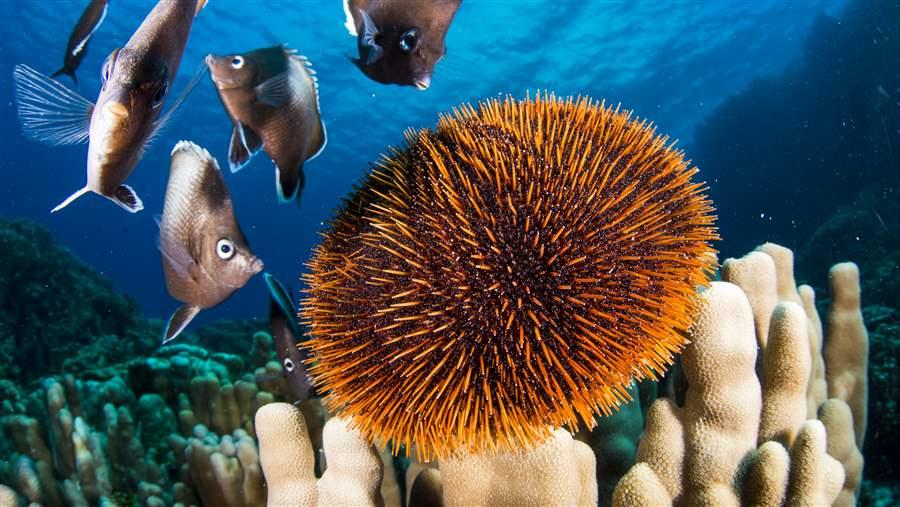 © Eduardo Sorensen
© Eduardo SorensenLocated in the southern Pacific approximately 4,000 kilometers (2,500 miles) west of Chile, the waters of Easter Island— or Rapa Nui, as the island, its indigenous people, and their language are known—are among the most distinctive in the world, with 142 species found nowhere else. Pew is working with the Rapa Nui community and the Chilean government to propose a large, fully protected marine reserve that would safeguard the island’s unique ocean environment and traditional Rapa Nui fishing practices.
Contact: Cesar Guala, consultant, Global Ocean Legacy-Easter Island, +56 9 5178 7855, [email protected]
French Polynesia
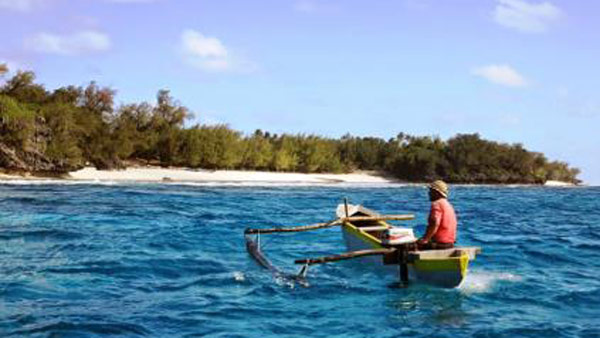 © Jerome Petit
© Jerome PetitThe vast waters around French Polynesia are home to an exceptional coral reef system that supports 176 coral and 1,024 fish species. Connections to Polynesian culture and way of life remain strong here. Community members, including fishermen, are well aware of the richness of their marine resources and recognize the importance of protecting them for the future.
Contact: Jerome Petit, director, Global Ocean Legacy French Polynesia, +689 87 222 560, [email protected]
Kermadecs
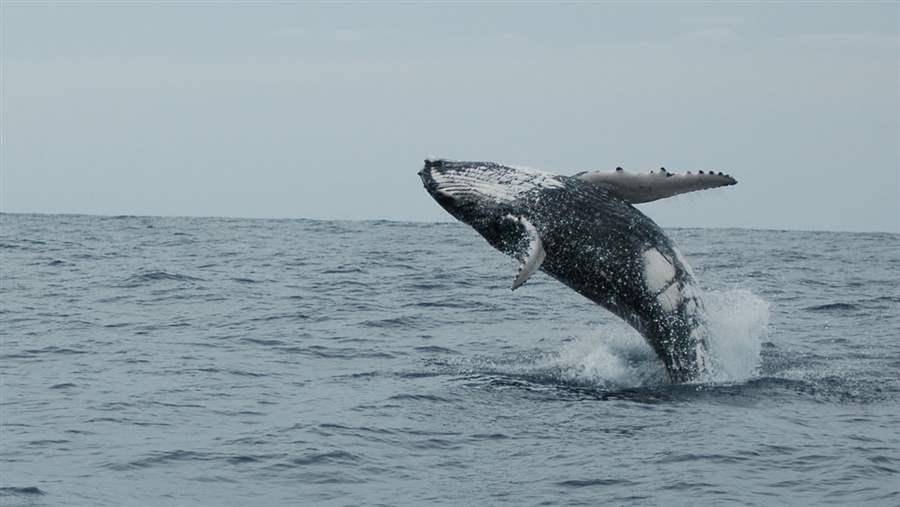 © Karen Baird
© Karen Baird
The Kermadecs, a remote region between the North Island of Aotearoa (the Māori name for New Zealand) and Tonga, is one of the last relatively untouched wilderness areas on the planet. Its waters are teeming with birds, whales, dolphins, fish, turtles, and other important sea animals. Ngāti Kuri, the indigenous Māori people of the Kermadecs, are “tangata whenua,” or the people of the land, who see protection of this region as consistent with the natural and cultural values they have traditionally associated with islands and seascapes.
Contact: Bronwen Golder, director, Global Ocean Legacy Kermadecs, +644 499 0330, [email protected]
New Caledonia
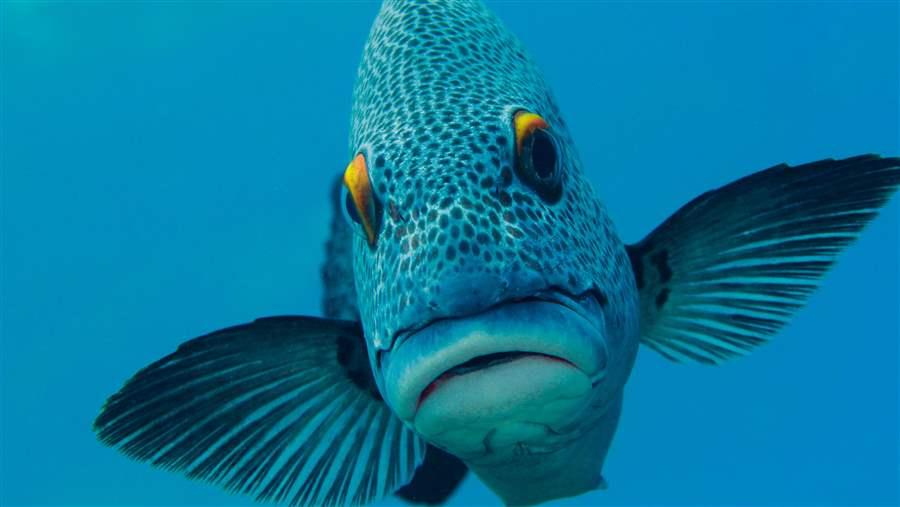 © Jean Re Reve
© Jean Re Reve
New Caledonia in the South Pacific has an incredible array of marine life, including more than 1,700 species of fish and 473 species of coral. Its waters are home to one of the world’s largest lagoons and the second-largest barrier reef.
Contact: Christophe Chevillon, director, Global Ocean Legacy New Caledonia, +687 75 01 19, [email protected]
Palau
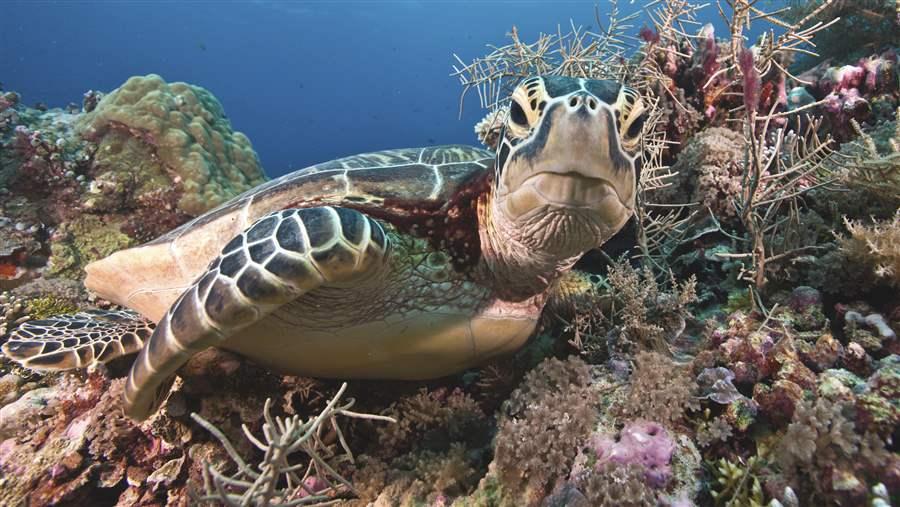 © iStockphoto
© iStockphoto
Palau, an archipelago of more than 250 islands in the western Pacific, is renowned for its healthy and diverse marine ecosystem. The nutrient-rich waters contain more than 1,300 species of fish and 700 species of coral. Among the species found here are a variety of sharks, turtles, manta rays, dugongs, and tropical fish. Pew is working closely with the people of Palau to create a large, highly protected marine reserve to safeguard the island’s waters for future generations.
Contact: Seth Horstmeyer, director, Global Ocean Legacy, +1- 202-290-5003, [email protected]
Pitcairn
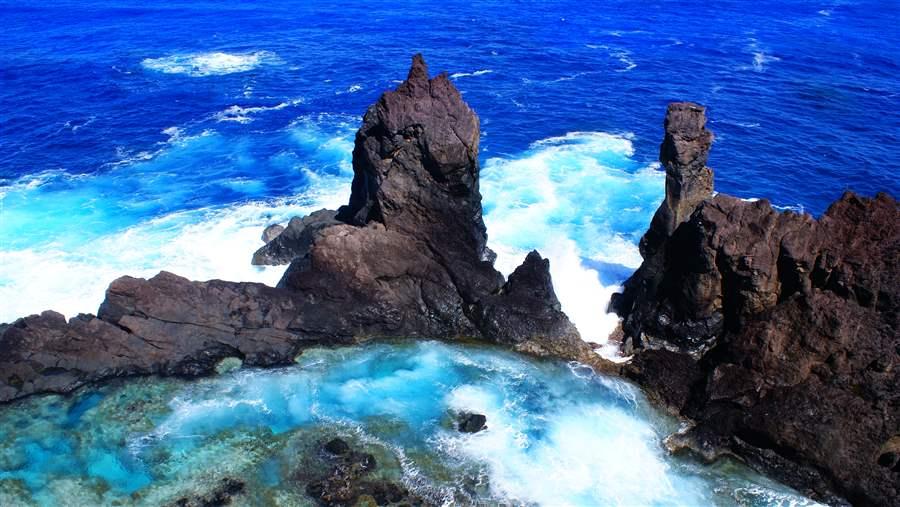 © Andrew Randall Christian
© Andrew Randall Christian
The Pitcairn Islands, a remote British overseas territory in the central South Pacific, encompasses four small islands and a vast ocean territory. Within these waters lies one of the bestpreserved ecosystems on the planet: a complex community of hard and soft corals that is home to 1,249 marine species, including 365 species of fish, 22 species of whales and dolphins, and two species of turtles. In March 2015, the British government announced it will create a fully protected marine reserve in the waters surrounding the Pitcairn Islands.
Contact: Jo Royle, officer, Global Ocean Legacy U.K. Overseas Territories, +07803131589, [email protected]
Endnotes
Front image: Titled “Gleaning from a Workshop of the Unknown,” this tapa, or traditional hand-designed Polynesian bark cloth, was created by Dame Robin White, one of New Zealand’s greatest visual artists. She is of Pakeha and Māori descent. The icons at the top represent threats facing the ocean and Pacific peoples, and a traditional Polynesian pattern of the ocean is depicted below.
For further information, please visit:
Pewtrusts.org/GlobalOceanLegacy
The Pew Charitable Trusts is driven by the power of knowledge to solve today’s most challenging problems. Pew applies a rigorous, analytical approach to improve public policy, inform the public, and stimulate civic life.
This fact sheet was updated in September 2015.











